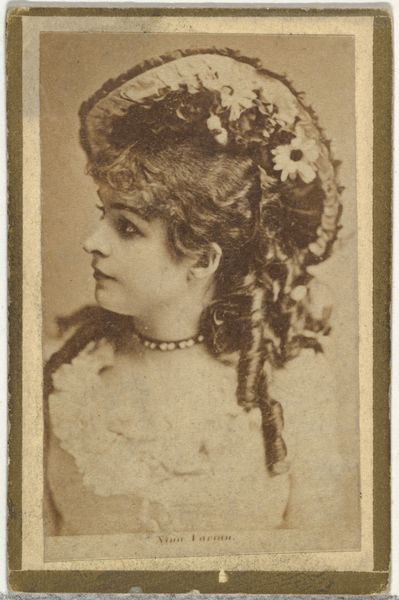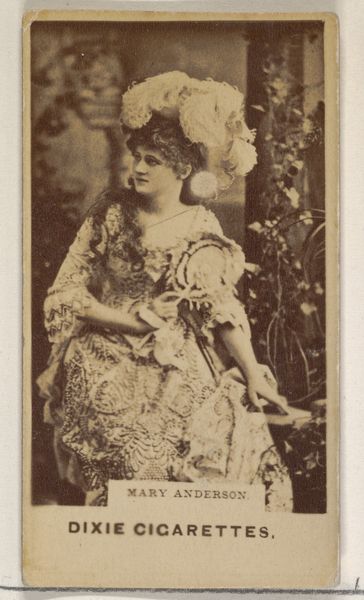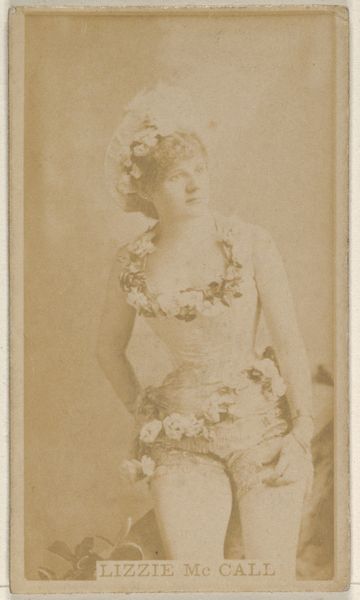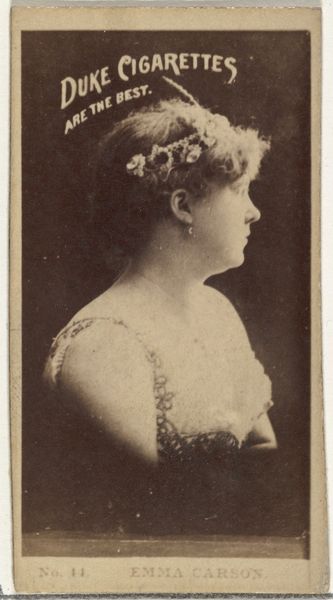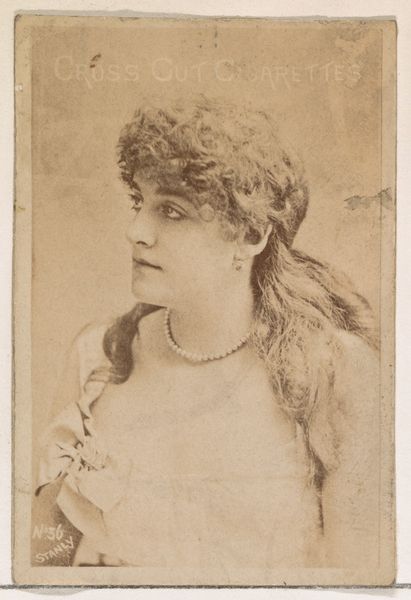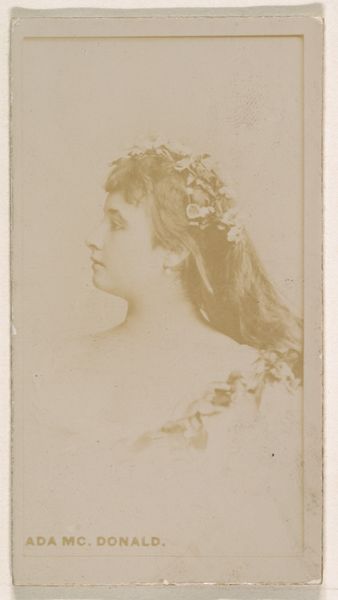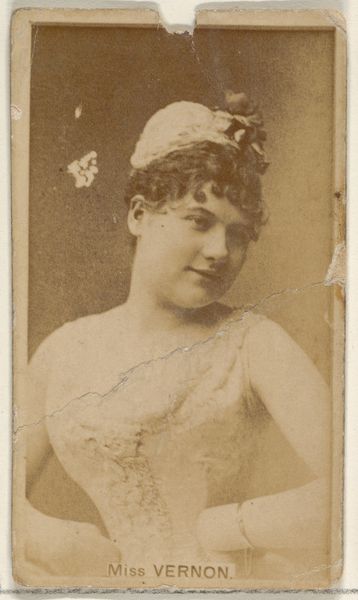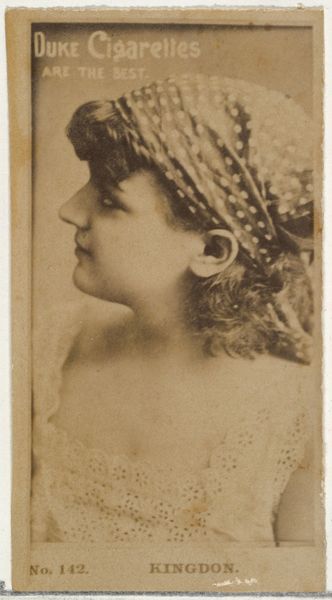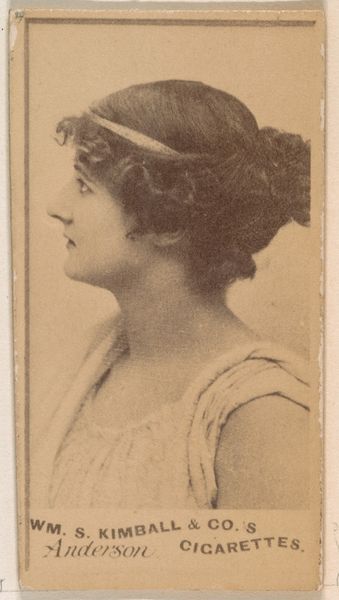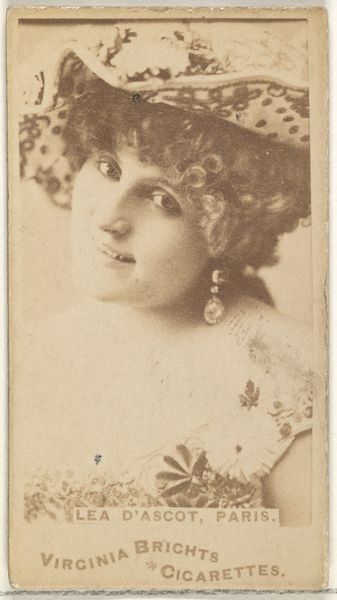
photography
#
portrait
#
photography
#
portrait reference
#
framed image
#
portrait drawing
Dimensions: height 56 mm, width 39 mm
Copyright: Rijks Museum: Open Domain
Editor: This is a photograph titled "Portrait of Sarah Bernhardt," taken between 1890 and 1895 by Léopold Reutlinger. The actress is adorned with flowers, gazing upwards. I find the image incredibly staged, even contrived, and I'm curious – how do you interpret this work beyond its surface representation? Curator: This image offers a glimpse into the constructed identities of late 19th-century celebrity culture and female representation. Bernhardt was very self-conscious and curated a stage persona. Photography was only a few decades old, thus was used for empowerment in many ways. Think about how it contrasts with traditional portraits made by men of women from the previous decades! What do you notice about her gaze? Editor: She looks towards something beyond the frame, her expression suggesting perhaps longing, maybe even defiance. Curator: Exactly! It rejects a passive viewing. Bernhardt, who often played powerful female figures on stage, might have sought to translate that agency into her photographic portrait, subverting the typical objectification of women in art. The flowers, too, are they merely decorative, or symbolic of something more? Editor: Perhaps symbols of femininity, reclaiming traditional motifs. It's fascinating to think of her consciously constructing this image as a statement. So what you are suggesting is that even her flowers may have played a role in her own carefully crafted brand? Curator: Precisely. Consider the power dynamics at play: a female performer collaborating in shaping her own narrative during a time when women's voices were often silenced or mediated by men. Her choice to participate in creating this portrait can be seen as a powerful act of self-definition, a step towards breaking free from societal constraints. This resonates even today, doesn't it? Editor: It definitely does! Thinking about it this way shifts the entire meaning for me. Now I perceive a declaration of independence, cleverly concealed within the aesthetic conventions of the time. Curator: Indeed. It reveals how art can act as a tool for women to reclaim and redefine their own identities within broader societal struggles for recognition and empowerment.
Comments
No comments
Be the first to comment and join the conversation on the ultimate creative platform.
